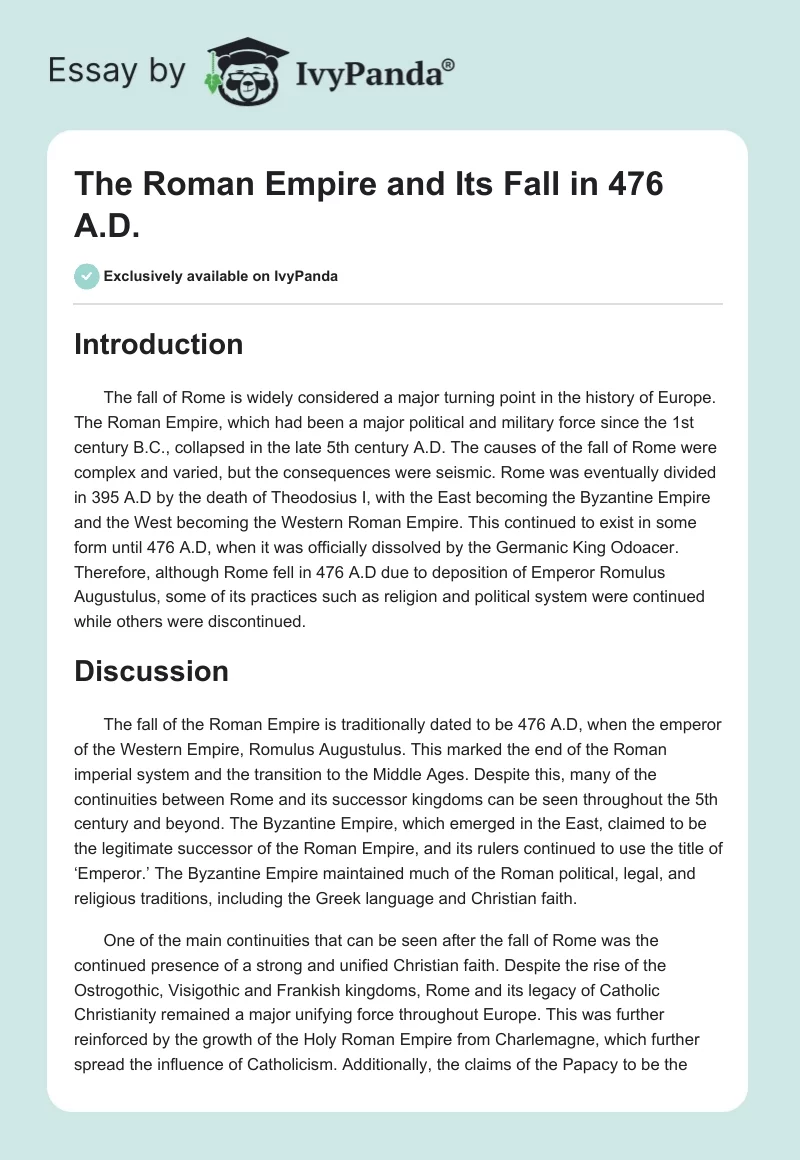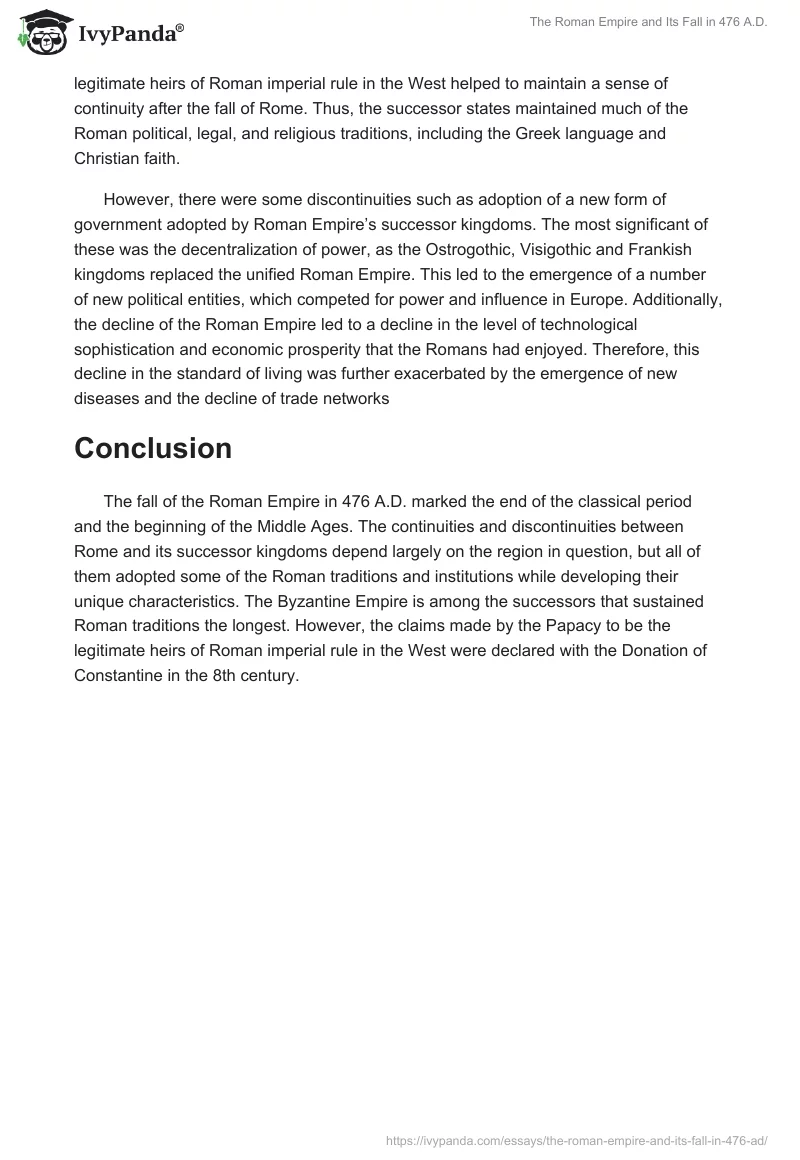Introduction
The fall of Rome is widely considered a major turning point in the history of Europe. The Roman Empire, which had been a major political and military force since the 1st century B.C., collapsed in the late 5th century A.D. The causes of the fall of Rome were complex and varied, but the consequences were seismic. Rome was eventually divided in 395 A.D by the death of Theodosius I, with the East becoming the Byzantine Empire and the West becoming the Western Roman Empire. This continued to exist in some form until 476 A.D, when it was officially dissolved by the Germanic King Odoacer. Therefore, although Rome fell in 476 A.D due to deposition of Emperor Romulus Augustulus, some of its practices such as religion and political system were continued while others were discontinued.
Discussion
The fall of the Roman Empire is traditionally dated to be 476 A.D, when the emperor of the Western Empire, Romulus Augustulus. This marked the end of the Roman imperial system and the transition to the Middle Ages. Despite this, many of the continuities between Rome and its successor kingdoms can be seen throughout the 5th century and beyond. The Byzantine Empire, which emerged in the East, claimed to be the legitimate successor of the Roman Empire, and its rulers continued to use the title of ‘Emperor.’ The Byzantine Empire maintained much of the Roman political, legal, and religious traditions, including the Greek language and Christian faith.
One of the main continuities that can be seen after the fall of Rome was the continued presence of a strong and unified Christian faith. Despite the rise of the Ostrogothic, Visigothic and Frankish kingdoms, Rome and its legacy of Catholic Christianity remained a major unifying force throughout Europe. This was further reinforced by the growth of the Holy Roman Empire from Charlemagne, which further spread the influence of Catholicism. Additionally, the claims of the Papacy to be the legitimate heirs of Roman imperial rule in the West helped to maintain a sense of continuity after the fall of Rome. Thus, the successor states maintained much of the Roman political, legal, and religious traditions, including the Greek language and Christian faith.
However, there were some discontinuities such as adoption of a new form of government adopted by Roman Empire’s successor kingdoms. The most significant of these was the decentralization of power, as the Ostrogothic, Visigothic and Frankish kingdoms replaced the unified Roman Empire. This led to the emergence of a number of new political entities, which competed for power and influence in Europe. Additionally, the decline of the Roman Empire led to a decline in the level of technological sophistication and economic prosperity that the Romans had enjoyed. Therefore, this decline in the standard of living was further exacerbated by the emergence of new diseases and the decline of trade networks
Conclusion
The fall of the Roman Empire in 476 A.D. marked the end of the classical period and the beginning of the Middle Ages. The continuities and discontinuities between Rome and its successor kingdoms depend largely on the region in question, but all of them adopted some of the Roman traditions and institutions while developing their unique characteristics. The Byzantine Empire is among the successors that sustained Roman traditions the longest. However, the claims made by the Papacy to be the legitimate heirs of Roman imperial rule in the West were declared with the Donation of Constantine in the 8th century.


